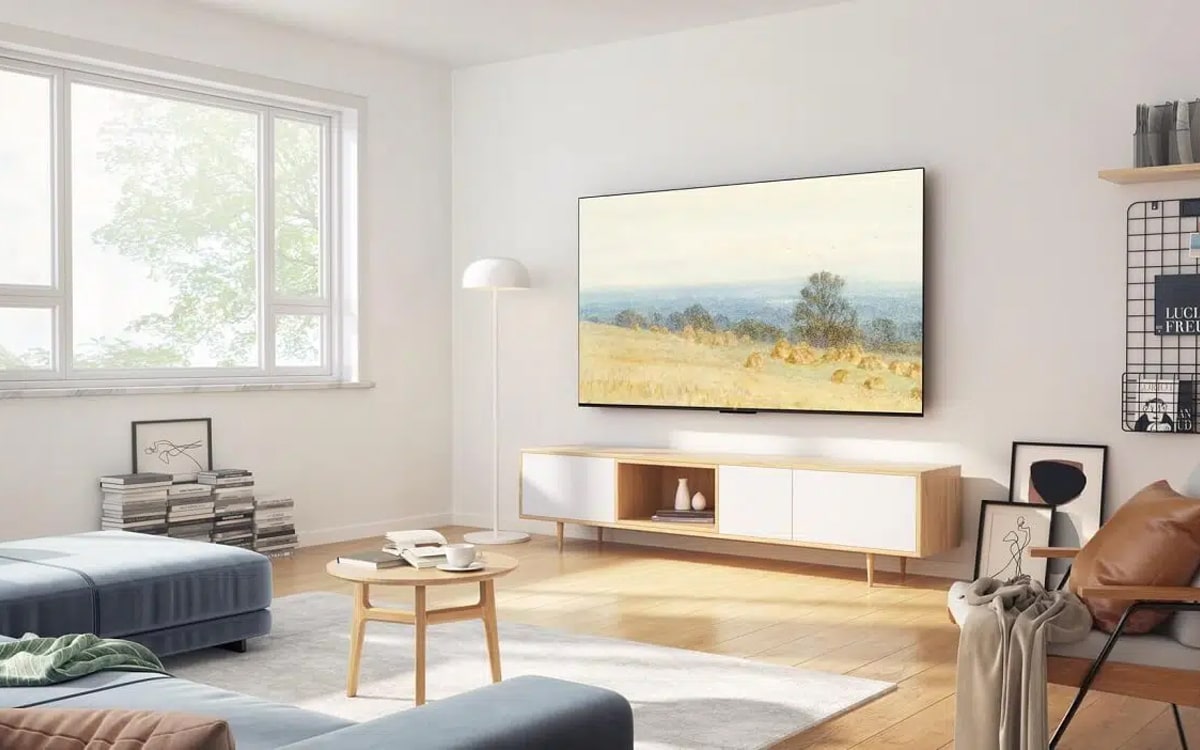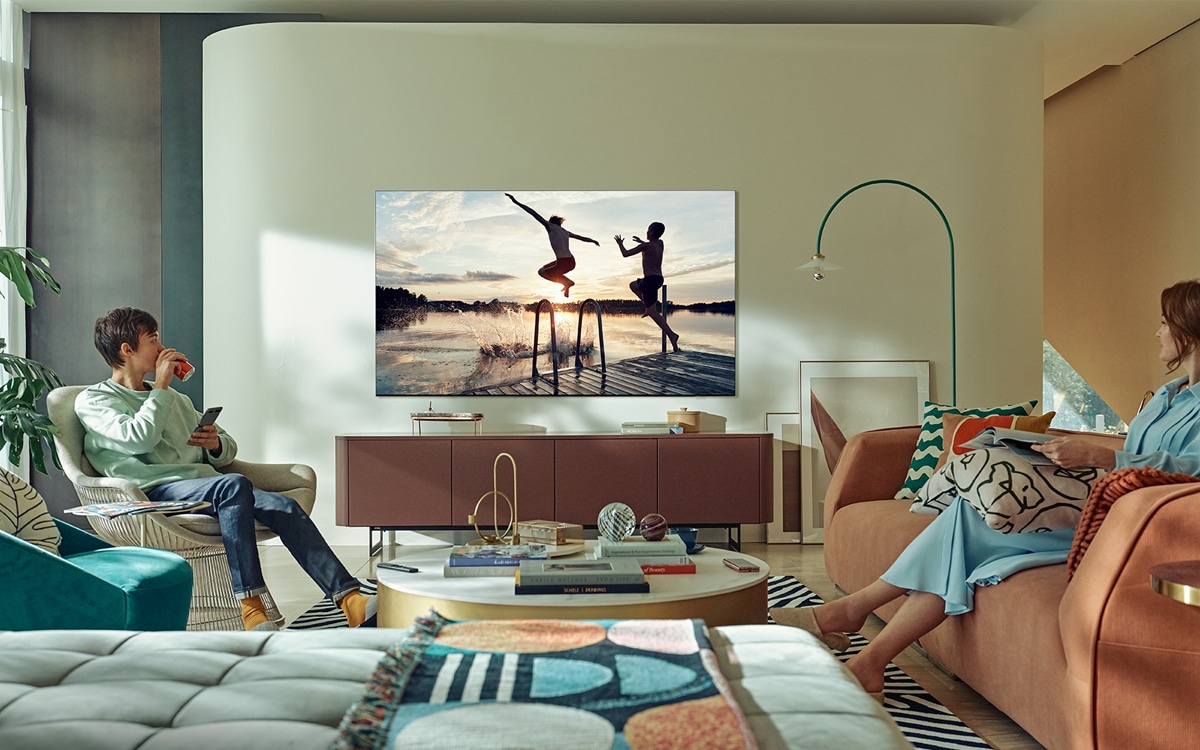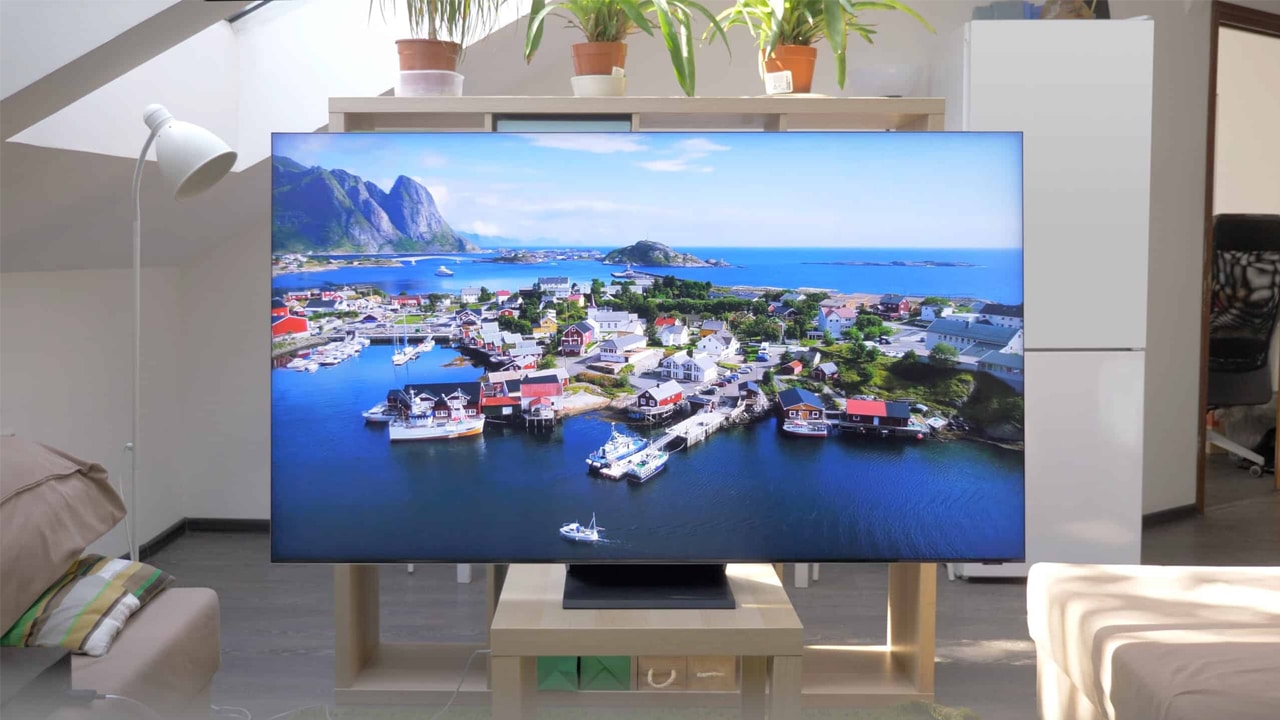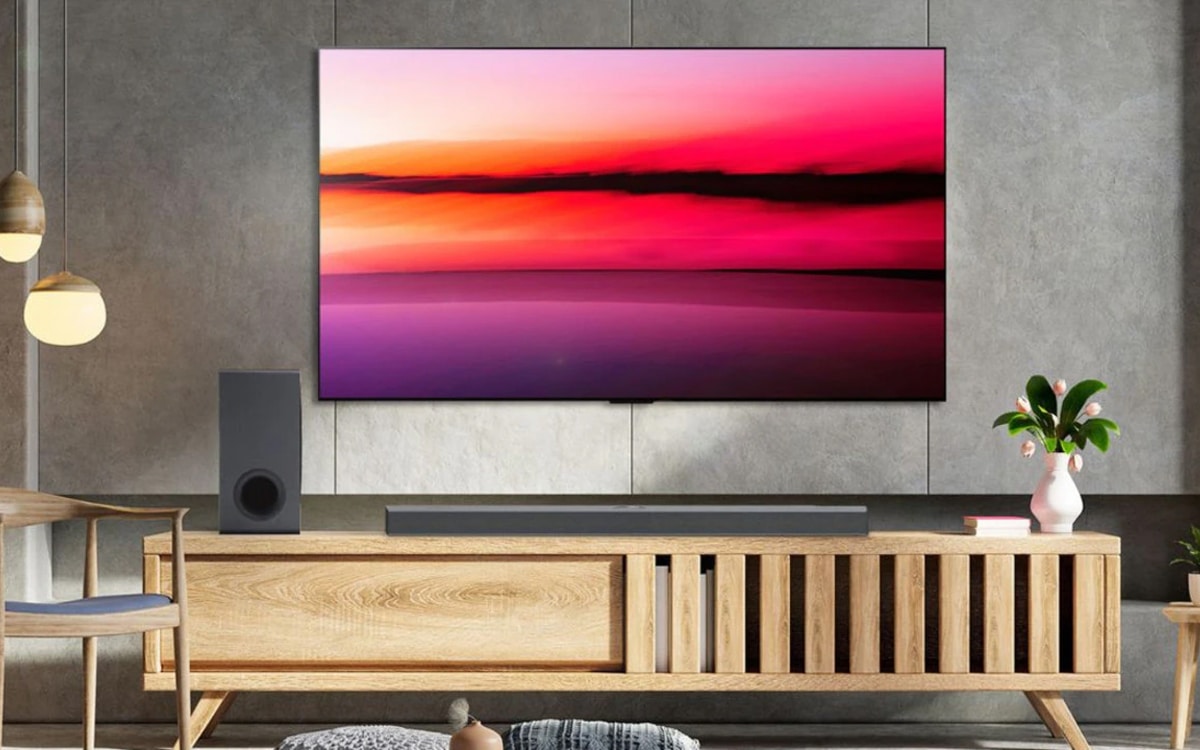You don’t want to end up spending too much on a TV filled with features you’ll never use. But you also don’t want to end up spending too little on a TV that satisfies none of your needs.
Buying a new TV can present a lot of distinct challenges, so we’ve put together this definitive guide. Below, we’ll show you everything you need to know about buying a TV, so you can do so with confidence, and find the TV you’ve always dreamt about!
What Should You Look For When Buying A TV?
When you start browsing through all of the millions of options on the TV market, you’ll quickly be inundated with specialised terms. Countless proprietary features, acronyms, and technical specs will be thrown at you in an attempt to get your attention. The trouble is, without good experience, it can be tough to tell which of these things actually matter to you. How are you supposed to know which features and specs will benefit you the most?
To kick off this ultimate guide, we’ve put together a handy list of the most important features you should look for in a TV. By understanding these important features, maintain a level head when presented with so many options!
Screen Size
Screen size is likely one of the first things you’re going to consider when buying a new TV. At first, your mind will likely settle on buying the largest screen size possible. Who doesn’t want to have the biggest TV in the neighbourhood?
However, it’s worth taking some time to really strongly consider the total size of your new TV. It’s more than possible for a TV to be too big for a space! Just like it’s possible for a TV to be too small for a space. You’ll want to consider which screen size is best for your chosen space.
If you know which room your new TV is going to be placed in, it’s worth getting some accurate measurements. Measure the walls of the room, as well as the existing floor space. This will ensure you don’t grab a TV that’s too large. A TV that is too large for your room runs the risk of becoming an obstacle that wastes vital space.
Measuring floor space is also important because it will ensure you have enough space from which to enjoy the TV. Sitting too close to a TV results in an unsatisfying viewing experience that requires you to twist your neck in all manner of unusual directions. On the other hand, sitting too far away from a television requires you to strain your eyes, just to make anything out!
You want to find the perfect distance from which to watch your TV. This can be done by taking the length of the screen and multiplying it by 1.2. What results is the distance that should be between the screen and the best seat in the room. Make sure your space can accommodate this distance for the best viewing experience.
Resolution
TVs look better than ever. Thanks to UHD resolutions like 4K and 8K, TVs can now boast immense pixel counts. This allows for more lifelike images that immerse you in on-screen action. If you want content to look its very best, you should opt for a TV that has a greater resolution.
It’s best to consider screen size and resolution at the same time. Higher resolutions look best on larger TVs. If you want an 8K TV, your best option is a larger TV, such as a 98-inch TV.
Resolution and screen size are often considered in tandem. This is because higher resolutions tend to benefit more from larger screen sizes. As we mentioned above, higher-resolution TVs boast more pixels. With more pixels, images can spread out across the length of the screen without losing fidelity. If you’re opting for a 4K TV, it’s recommended to buy a 43-inch TV or larger. For 8K resolutions, you should aim for a 75-inch TV or larger.
Be sure to keep note of your chosen TV screen size. This will help you to choose a suitable resolution!
Display Type
TVs don’t only differ in resolution and screen size, they also differ in terms of display technology. When looking through different TV options, you’d quickly come across the terms “OLED”, “LED”, and “QLED”. Though they are similarly named, they actually refer to very different display technologies. Without knowing this, however, they can simply seem like confusing technical buzzwords.
When we mention “Display technologies”, we refer directly to how a TV not only renders an image but also projects it out. Most TVs, like QLED, LED, and LCD TVs make use of backlights that make the on-screen image visible.
Where these TVs differ is in how they render their images. LED and LCD displays make use of pixels that create specific colours that are illuminated by their backlights. QLED TVs, on the other hand, make use of quantum dot technology. Quantum dots are truly microscopic semiconductors. When these semiconductors are subjected to a certain amount of electricity, they generate light of different colours. QLED TVs are able to recreate far more accurate colours, making them great for film and TV fans.
OLED displays differ entirely from QLED displays. These displays still feature an array of pixels, similar to LED TVs, but the difference is in how they are illuminated. Each of the pixels used in an OLED display is self-illuminated. This means that not only do they render images, but they also produce their own light. Being able to turn pixels on and off as needed allows OLED displays to create immense contrast in images.
Your choice between the display types will depend on your budget. LED TVs are one the most affordable end of the scale. OLED TVs are middle-end displays, whereas QLED TVs are high-end and often cost a little more!
HDR
HDR is a technology that often leaves many people mystified. It’s touted as a defining feature in a number of popular TV models, but unless you know what it does, it can be tough to understand why you should care.
HDR, or “High Dynamic Range”, is a technology that allows TVs to render more complex and detailed colours. HDR does this by widening the colour palette available to the TV. As well as this, HDR also increases the range of brightness levels that TVs can access.
You’ll definitely encounter HDR while searching for your new TV. HDR is a technology that will allow your TV to access a more complex range of colours and brightness levels for more lifelike imagery.
If fidelity matters to you, and you’re planning on grabbing a 4K or 8K TV, then we strongly recommend looking for HDR support. HDR content can easily be found through 4K UHD Blu-ray discs, or even on specific Netflix and Disney+ titles! HDR especially looks great on large 85-inch TVs. The greater screen space allows every colour to pop, and makes it easier to notice every single detail!

Smart Features
Smart TVs were once a niche innovation that cost heaps of money to get your hands on. Now, smart TVs are far more accessible. In fact, you’d have a harder time finding a non-smart TV. However, no two smart TVs are ever the same. Smart TVs all boast varying features and capabilities. As such, it’s worth taking your time to really look into the smart features on offer.
If you know that you want your TV to recommend content on streaming services, then you should narrow your search down to look for TVs that offer this feature.
It’s also worth taking a look at the smart TV’s operating system and user interface. A good operating system allows your smart TV to smoothly and efficiently process your requests. This makes the TV much more pleasant to use. A good user interface, on the other hand, makes it easier to navigate through your TV’s features without getting lost. A bad user interface can make your TV a hassle to use!
Gaming Modes
Many people use their TVs to dive into digital worlds on their favourite consoles. If you’re planning on using your new TV for gaming, you’ll want to make sure it has sufficient features.
The most important feature to look out for in a gaming TV is a “Gaming mode”. Though gaming modes are referred to by different names, depending on which model you’re using, they’re highly useful.
Gaming mode disables all post-processing effects so that gameplay can appear incredibly smooth. By removing post-processing effects, your games are able to be much more responsive. This can make you a better player!
Gaming mode automatically adjusts your TV’s display settings to create the optimal gaming conditions. Most importantly, gaming mode deactivates all post-processing effects that are otherwise applied to film and TV content. If these effects are disabled, images that are rendered by the console can be more quickly presented on-screen. This results in much lower input latency. When gaming mode is activated, the instant you press a button on your controller, the associated action will show on-screen.
Connections
If you’re planning to use your TV to hook up consoles, Blu-ray players, or set-top boxes, you’ll need the right connections. Luckily, most modern TVs will come with up-to-date HDMI input ports so you can quickly hook up your devices. Be sure to check which HDMI cable types the TV can accept. In order to view 4K content, you will need HDMI 2.0 compatibility. If you want to enjoy 8K content or high frame-rate gaming, you will need to ensure that the TV is compatible with HDMI 2.1.
However, you’ll still need to consider the number of input ports. If you plan to have numerous devices hooked up to your TV, you’ll need to make sure that the TV has plenty of input ports. This will save you from wrestling with wires to swap inputs around!
Sound Capabilities
While televisions are primarily a visual medium, they wouldn’t be truly complete without sound. Sound plays a crucial role in bringing the best of content to life. If you want to truly lose yourself in content, you’ll want to make sure that your TV has good sound.
Towards this end, we recommend looking around for TVs with built-in sound technology. Look for TVs with built-in speakers that can help to project audio out around your chosen space. Many modern TVs feature object-tracking sound. This technology allows sound to travel in tandem with the motion of on-screen objects.
Sound plays a crucial role in the TV experience. Sound helps to make everything on-screen appear all the more real, by adding that extra dimension. Make sure to look for great sound in your new TV!
Many modern smart TVs are also able to leverage AI to help improve the sound in real time. If you often have trouble hearing dialogue over a film’s soundtrack, then AI can help isolate the dialogue track to help enhance its volume level!
Refresh Rates
Refresh rates are commonly confused with frame rates. Frame rates refer to how quickly images are generated by a computer. On the other hand, “Refresh rate” refers to how many times a TV screen can refresh its image within a single second.
The higher a TV’s refresh rate is, the more smooth and fluid motion will appear. Thus, TVs with high refresh rates are crucial for those who want to tune into live content. With a higher refresh rate, your TV can present motion that appears silky smooth, and true to real life. Higher refresh rates go down a treat when watching those big football matches with your friends. You’ll be able to cheer together the second the ball passes the goal line!
Higher refresh rates are also essential if you plan to enjoy high-frame-rate gaming. Higher refresh rates allow higher frame rates to display in all of their glory.
How Can You Save Money On A TV?
TV prices can fluctuate massively from one model to the next. Sometimes, the price of a TV can simply be too much to bear. Are there any ways to save money on a TV? Let’s take a look!
Wait For Black Friday
There are a few times throughout the year when TV prices are much lower than normal. Of course, one of these times is Black Friday. What once started as a holiday exclusively in the United States has now gone totally worldwide. When Black Friday rolls around, it’s worth taking a look at some retailers, to see if they are offering any deals on the latest models.
If not, don’t worry, because there’s also Cyber Monday! Cyber Monday is the digital sibling to Black Friday that focuses on discounts for technology, covering both appliances and software!
If you want a new TV for a reduced price, it’s best to wait for the right time. Black Friday often ushers in a number of great TV deals. The start of the year also has several lowered prices!
Black Friday and Cyber Monday discounts can be truly impressive, not just offering a mere 10% off. Instead, offering more than even 50% off!
Wait For The Start Of The Year
One of the worst times to buy a new TV is during the Summer. At this time of year, manufacturers release new models to the market. These are the latest and greatest TVs, packed full of the newest features. As such, they also have the highest price tags.
The best time to buy a new TV is the very start of the year. New TV models are commonly released in the Summer. To make room for these new models, many older models have their prices slashed significantly.
It’s best to wait until the time just before new TVs are due to be released. At this time, manufacturers are eager to shift stock of some of their older models to make way for the latest TV models. To do this, they’ll often reduce the price significantly. If a new TV ever gets released, and you find yourself interested in it, it’s best to wait a year before buying it, when the price will be significantly reduced.

Trade Your Old TV In
Many retailers offer a useful buyback scheme. When it comes time to grab a new TV, hold onto your old one, and trade it into the store. The value of the TV can then be subtracted from the cost of your new TV.
This can be a great way to save hundreds of pounds. It’s also a great option for those looking to upgrade their TVs. You won’t have to worry about throwing your old TV out, because you can rest assured that it is now in good hands.
Is It Worth Buying A TV On Finance?
Another option for saving money on a new TV is to make use of financing. This is an option offered by a number of manufacturers and a number of retailers. Purchasing a product on finance involves splitting the total cost into a series of smaller payments. These payments are then made over regular intervals until the full cost of the product is covered.
We would recommend that you consult a finance expert before opting for finance, to be sure that you can cover the full costs.
However, financing can be a great option for those who can’t afford to drop thousands of pounds in one go on a new TV. By breaking the payments up, heavy price tags become a lot less daunting. These payments are usually broken up into monthly increments, so you will still need to ensure you have the correct amount of funds each month to cover each payment.
Finance is not a magic solution that can make expensive TVs cheaper. Instead, it simply helps to lighten the load of some of these heavy price tags. In some cases, you may even need to perform a credit check to be eligible for financing. Retailers need to be sure that payments will be covered before agreeing on a financing plan!
Financing options can be great for getting your hands on a new TV. However, these are not magical solutions that will allow you to get a free TV. You must be sure that you can pay the fees back!
Finance options are great for covering the costs of those more expensive TVs. If you can’t afford to make a hefty single down payment on a TV, you can instead break that payment up into increments to make it easier to cover. However, you should be sure to remember that financing is not there to make TVs cheaper. You will still need to be able to make each of the planned payments. As such, we would recommend taking your time when considering financing options.
Do TVs Consume A Lot Of Electricity?
TVs do consume a little more electricity than other home appliances. When you’re looking around at televisions, we’d recommend taking a look at the technical specs. Included within these should be the “kWh”. This will tell you how much electricity the TV will use per hour. Unfortunately, you’re unlikely to find a TV that ranks lower than “E” on the energy rating label.
Luckily, there are quite a few ways to reduce the energy consumption of your TV and lower your energy bills. Let’s take a look at these.
How To Reduce The Running Costs Of Your TV
Lower The Brightness
Lowering the brightness of your TV is incredibly easy, and is one of the most effective ways to lower energy use. Most of the energy used in a TV is directed towards the brightness of the screen. The brighter the screen is, the more energy the TV needs to use.
Lowering your standard brightness by a few increments can easily help to lower your electricity bills. It will also be beneficial for your eyes in the long run. Having the brightness cranked up high on your TV can easily result in eye strain.
Turn Your TV Off!
Don’t worry. We’re not saying to never use your TV ever again. Instead, we recommend that you turn your TV off whenever it’s not in use. This might sound kind of obvious, but it’s actually incredibly easy to accidentally leave your TV on without realising!
Ever stepped up from the sofa to quickly handle a chore, only to end up sidetracked, leaving that TV box set paused indefinitely? It’s a remarkably common issue!
Getting into the habit of turning your TV off whenever you step away from it helps to prevent the chance of accidentally leaving your TV turned on!
Use Sleep Timers
If you’re still prone to leaving your TV on accidentally, then we’d recommend making use of sleep timers. Many TVs come with sleep timers that can be fine-tuned to your needs. When a certain amount of time passes without any input from the user, the TV will turn itself off.
Sleep timers will automatically shut your TV down after a period of inactivity has passed. It’s worth making use of these timers. They help to ensure that, if you accidentally leave your TV on, it won’t continue sapping electricity.
You can adjust how long it takes for the sleep timer to elapse so you can still pause your content without worrying about the TV turning itself off!
Turn The TV Off At The Wall
Even when you’ve hit the “Off” button on your TV’s controller, it’s still operating behind the scenes. Instead of being fully turned off, the TV is instead in “Standby” mode. Some amount of power is still used by the TV so that it can turn on quickly as soon as you interact with it.
Though standby mode does not use a lot of power, turning your TV off at the wall can be a great way to cut down on electricity usage.
How Long Do TVs Last?
TVs are incredibly hardy. When they’re cared for, TVs can easily last more than 10 years of continuous use. The lifespan of a TV is usually measured in terms of hours. TVs usually last around 10,000 hours of use.
However, in order for your TV to last this long, they need to be looked after. Many of the tips for safeguarding your TV’s longevity also apply to lowering its energy usage. Things like lowering the brightness and making use of sleep timers can help your TV last a lot longer.
You’ll also want to be sure to physically maintain your TV. Be sure to give it a quick dusting at least once a week to keep dust from gathering in the vents!
How Often Do People Buy A New TV?
Because TVs can stick around for a long time, often outlasting the usual 10 years, you might wonder how often people tend to replace their TVs.
Usually, most people tend to start sourcing out replacement TVS when their existing TVs get older. TVs are often considered “Old” when they pass the 5-year mark. After this point, TVs are more likely to become faulty and develop issues. Thus, people are more likely to buy new TVs every 7 years on average.
People tend to buy new TVs when their current TVs reach old age. This means that, on average, people tend to buy new TVs every 7 years. This is not hard and fast. It can change from case to case!
This definitely is not the case for everyone. As we’ve made clear already, TVs can easily last for more than 10 years. If you have a TV that’s more than 10 years old, but still working perfectly, then there’s no reason to replace it just yet!
What Is The Cheapest Way To Watch TV In The UK?
Once you have your TV, you’re going to have to find content to enjoy on it. Luckily, there are a number of cost-effective ways to watch content on your TV.
One of the cheapest ways to watch TV in the UK is to make use of Freeview. Freeview and Freesat are both totally free to access and allow you to access major channels without any need for a subscription. Just make sure to keep in mind that in order to enjoy live content or any content from BBC services, you will need to ensure you have a full TV Licence.
While cutting out the TV Licence can be a great way to save a little bit of extra money, it will make it impossible to access live content. You might not have to pay £159 every year, but you will miss out on a lot of the best content on TV!

Frequently Asked Questions
Where Do I Start When Buying A TV?
When you’re looking to buy a TV, we would recommend starting by measuring the space in your chosen room. This will help you to quickly decide on a screen size and resolution. This will narrow down your options, to help make your choice much easier. Bigger TVs will need more space, while smaller TVs are best for smaller rooms.
Which Is Better OLED Or QLED?
Neither of these display types is truly better than the other. They both offer very different viewing experiences. OLED TVs are able to offer greater contrast thanks to their self-illuminating pixels. QLED TVs, on the other hand, are able to recreate more detailed colours for more vibrant imagery. Your choice between the two simply depends on how you want your content to look.
Is OLED Better Than 4K?
The two are both very different things. OLED is a display technology employed in numerous modern TVs. 4K, on the other hand, is a screen resolution. However, the two can work together perfectly. 4K imagery benefits greatly from OLED screens. The greater contrast afforded by OLED pixels helps to make 4K images pop off of the screen all the more clearly!





